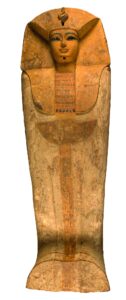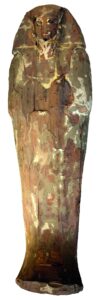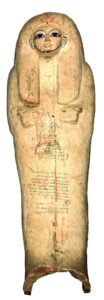Amenhotep II (Aakheperure)
Son of Thutmose III and possibly Meritre-Hatshepsut
New Kingdom, 18th Dynasty (ca. 1550-1295 BC)

Amenhotep II probably ascended the throne at about the age of 18, perhaps as co-regent with Thutmose III, and ruled for at least 26 years. The tallest of his bloodline, this king boasted of his athletic prowess, often representing himself performing feats of strength and skill. Remembered as a great sportsman, he had a reputation as an excellent charioteer and displayed considerable skill with the bow and arrow.
An important stela from his reign was found in his temple just northeast of the Great Sphinx at Giza. In it, he tells of his fondness for horses and narrates a story in which he was warned by his courtiers, as a young prince, that it was dangerous for him to ride large animals. But his father the king, who was happy with his son’s bravery, presented him with a gift of horses and made him responsible for the stables.
He maintained the borders of the empire solidified by his father and fought campaigns in the Levant and in Nubia, securing wealth and power for Egypt. A prolific builder, he expanded the Karnak complex dedicated to the great state god Amun, and commissioned the enlarging of several smaller temples. He was married to his sister Tiaa A, who became the mother of future ruler Thutmose IV, and sired other children as well.
The king’s mummy, which reveals that he died at the age of about 45, was found inside the quartzite sarcophagus in his tomb in the Valley of the Kings, rewrapped and put inside a replacement coffin of cartonnage by the 21st Dynasty priests.























